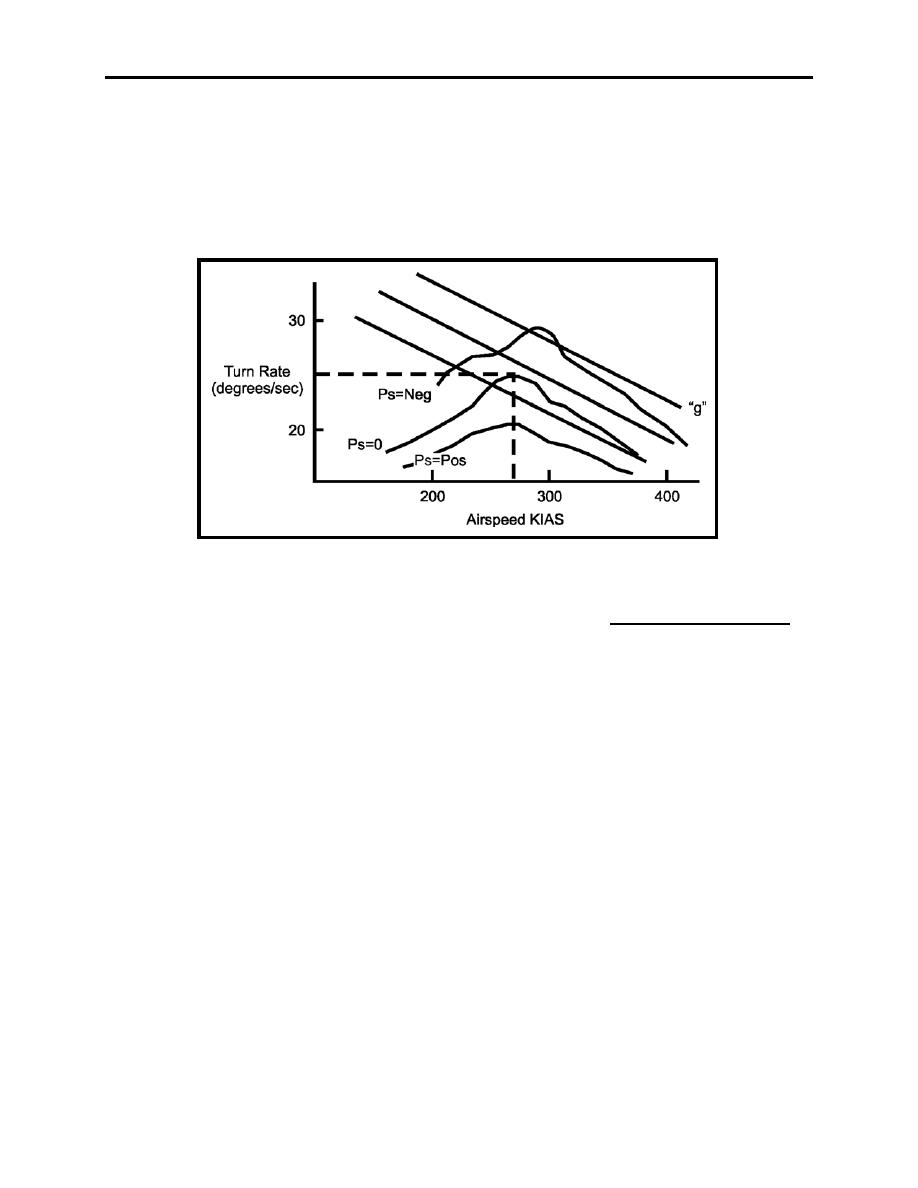 |
|||
|
|
|||
|
|
|||
| ||||||||||
|
|  CHAPTER NINE
BASIC FIGHTER MANEUVERING (BFM) THEORY
Specific Excess Power (Ps)
Specific excess power (Ps) curves measure the capability of an aircraft to increase its energy
package by using excess thrust. As part of the constant tradeoffs: a max g turn will deliver the
best turn performance possible but will result in a loss of energy (Ps=negative). This is clearly
illustrated on the Ps curves in figure 9-7.
Figure 9-7 Ps Curves
On this chart, the Ps = 0 curve can be used to determine the aircraft's best sustainable turn rate.
This curve represents no loss of total energy. Where it peaks is where we find our best-sustained
turn rate (i.e., the highest turn rate while sustaining our energy package). Each aircraft has its
own specific sustained turn rate at a definable speed. At this given airspeed, a more aggressive
pull will deplete energy while an easing of g pull will increase the aircraft's energy package.
When one aircraft's Ps curve is superimposed over that of another type of aircraft, a crew can
compare where their fighter may have an advantage over another aircraft. This comparison will
directly influence the type of tactics and strategies a fighter crew will employ against another
aircraft. In VT-86, you will be fighting another T-2C, so comparison of the Ps curves are less
important than they will be in the fleet.
Energy Management While Maneuvering
A good fighter crew understands the above energy concepts but will never consciously dwell on
them in the cockpit. The crew will, however, know their corner speed and optimum AOAs cold.
(Corner speed for the T-2C has been already identified as 280 KIAS.) Performance maneuvers
can be broken down in terms of the performance achieved and the energy change that results.
The basic T-2C maneuvers and turns and their Ps energy parameters are as follows:
9-12
BASIC FIGHTER MANEUVERING (BFM) THEORY
|
|
Privacy Statement - Press Release - Copyright Information. - Contact Us |